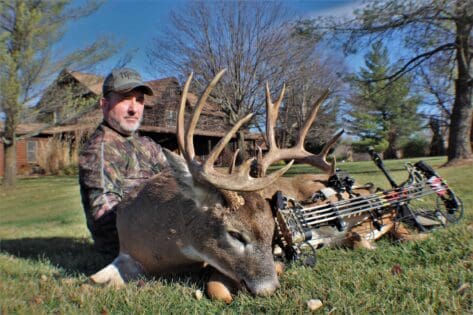Lessons from October Whitetail Hunts of the Past
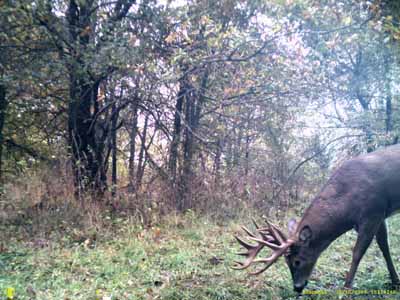 As I sit here counting the hours to the start of bow season, I find myself reflecting on the success and failures of my October hunts. Scrolling through my filing system of memories I reflect on some of the earliest hunts of my youth, my years of guiding in Illinois, and my more recent hunting seasons in my new state of Iowa. The more time that I spend reminiscing on early season hunts the more I realize that I have learned some valuable lessons that I need to share. I will categorize these lessons by the different weeks of the month of October.
As I sit here counting the hours to the start of bow season, I find myself reflecting on the success and failures of my October hunts. Scrolling through my filing system of memories I reflect on some of the earliest hunts of my youth, my years of guiding in Illinois, and my more recent hunting seasons in my new state of Iowa. The more time that I spend reminiscing on early season hunts the more I realize that I have learned some valuable lessons that I need to share. I will categorize these lessons by the different weeks of the month of October.
Opening Week, 1st-7th: The sacred opening week…where to start??
It is no secret that opening week of bow season can be extremely productive for sightings of mature whitetails. They are still patternable and can often times be quite visible. If you are doing your pre-season homework properly you will most likely have a good idea where you need to be opening day. During my guiding days opening week was almost always a lock for big bucks hitting the ground.
Techniques for opening week in the Midwest are nearly always food related. Although food sources vary widely, many hunters never consider the palatability of the different food sources during this time of the year. Corn that gets planted late in the spring due to weather, mechanical breakdowns, etc. may be fairly “wet” still in early October; as a consequence, it is not very palatable to deer. Soybeans that get planted early due to favorable conditions may be yellowing or even dropping their leaves during opening week of bow season. Beans in this condition are often undesirable to deer as well. Alfalfa/clover that gets cut late in the summer, then gets some early fall rains, often regenerates with fresh tender plants that can draw deer in from quite a distance. Finally, if the mast crop is substantial all other food sources could be barren of deer activity for weeks. The white oak acorn is the most widely consumed food source of the whitetail deer in most areas of its range. If white oak acorns are falling, the deer will virtually ignore all other food sources until they are gone.
So, lesson #1: Find the right food source….find the deer. DISCLAIMER (unusually warm weather will limit your deer sightings even on the best food source!)
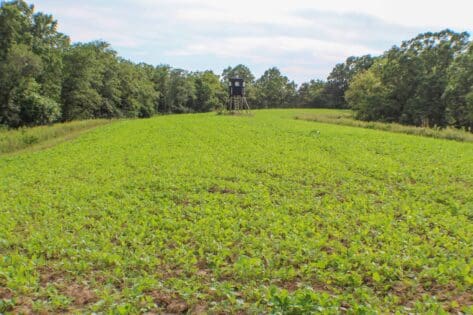
This week can prove very frustrating for many hunters. Mature bucks seem to disappear this week every year. Summer feeding patterns dissolve, bachelor groups of bucks disband, and preparations for the pending rut begin. As a result of all of these things big mature whitetail bucks get pretty darn hard to find. With lots of acorns on the ground, plenty of trees to rub, and no does to breed there really isn’t much motivation for these wise old bucks to break cover.
However, all is not lost. Back in the early 2000’s I was in Pike County, Illinois guiding at Harpole’s Heartland Lodge. We had a 3-day period with no hunters in camp (Oct. 7-9th). A cold front moved in, and daytime temperatures plummeted into the 30’s. There were mature bucks on their feet everywhere. Many Boone & Crockett caliber bucks hit the ground that week in the surrounding area. All we could do was drive around and glass the big bucks out in the open food sources because we had no hunters to put in the stands. Fast forward to 2005…I was in a stand in Iowa on October 9th. A mild cold snap dropped daytime temps into the high 40’s and nighttime temps to the mid 30’s. I smacked a 300 plus pound 150-inch 10pt. as he walked into a clover field right before dark.
Lesson #2: Hunt favored food sources and hope for good weather. If it gets unseasonably cold, you better be in a tree.
Week #3, 15th-21st: October Lull, part 2
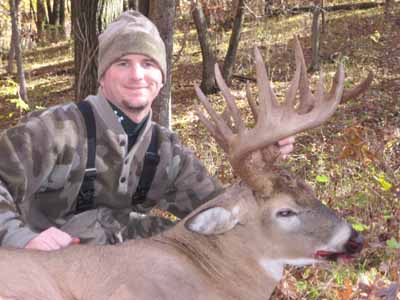 This week can be equally as frustrating as the previous week. You should still be applying your early season feeding pattern strategies and hoping for some really good weather. If you do catch a mature buck on his feet during daylight hours don’t be afraid to call to him and check his temperature. Light rattling and grunt calling this time of year could invite a response from an aggressive buck.
This week can be equally as frustrating as the previous week. You should still be applying your early season feeding pattern strategies and hoping for some really good weather. If you do catch a mature buck on his feet during daylight hours don’t be afraid to call to him and check his temperature. Light rattling and grunt calling this time of year could invite a response from an aggressive buck.
Some years back I was guiding a hunter on Oct. 17. The weather was average for the time of year and deer activity was moderate. The hunter was high on a ridge and had an extremely wide field of view from his position. Before the sun had even begun to warm the surrounding landscape, the hunter noticed a nice mature buck crossing an opening in the woodlot. Without hesitation he did a short rattling sequence followed by a few grunts. Although he was hundreds of yards away, the buck took immediate notice of the commotion. He disappeared into the brush only to reappear some 60 yards away and closing fast. The hunter came to full draw and when he was presented with a clean shot, he closed the book on a beautiful P&Y class whitetail.
Lesson #3: Never go to your stand without your calls this time of year.
Final 10, 22nd-31st: Trick or Treat
The action during the last week of October can vary from mildly entertaining to downright ridiculous. You also have a unique opportunity at this time of the year to catch a buck on a consistent pattern that is also showing some interest in the ladies. With the right set of conditions daylight movement of mature whitetail bucks will begin to increase dramatically during this time frame.
During the fall of 2009 I sustained a wrist injury on the opening weekend of bow season. I was unable to even raise my bow up much less bring it to full draw. The thought of sitting on the sidelines for a large portion of bow season was not only heartbreaking but a very real possibility. I elected to establish a few mock scrapes and set up some trail cameras to cover the woods in my absence. Even though I couldn’t participate in the game I still wanted to catch some of the action.
After a week or so I pulled the cards from the trail cameras to see who paid me a visit. As I scrolled through the pictures of the usual suspects (does, fawns, small bucks, turkeys, etc.) I stumbled on a picture of a magnificent beast. He was a B&C class whitetail that was standing right in the middle of my mock scrape set up. Over the 5-day period before checking the camera I had gotten over a dozen pictures of this buck. The last photo I got was on Oct. 15 and it was a daylight picture! My conclusion was that this buck was living very, very close to this camera and was on a fairly consistent pattern. I removed the camera quickly and quietly, then I got the heck out of there.
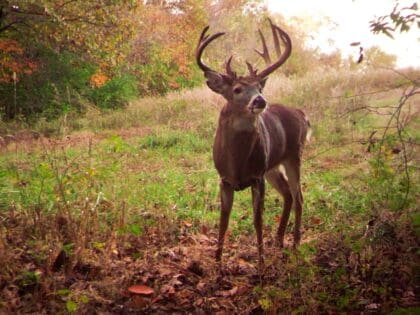
As the sun began to rise on Oct. 24th I was already settled into my stand. I had decided that I would sit all day in this location in hopes of catching a glimpse of this amazing buck. Mother Nature welcomed me back to the woods with the prettiest morning imaginable. The timber was alive with the songs of birds, the scampering of squirrels, and the playful banter of a flock of turkeys over the hill. However, at this point, deer movement was surprisingly scarce.
At 9 am I decided that I had just about enough of my stomach’s incessant growling. To the surprise of no one (who knows me well), a stash of king size candy bars and caffeinated beverages was within my reach. For a few moments I took my mind off of the hunt and grazed on the bounty hidden in my backpack, then, it was back to my vigil. Around 9:30 I heard the familiar sound of a buck making a scrape in the thick leaves down the hill. All I could see were the hind quarters of the animal as he pawed at the ground. Upon the completion of his meticulous project, he raised his head to reveal himself as the buck I was after. He then proceeded up the hill in my direction on a path that would bring him to within 40 yards of my stand. At a distance of approximately 45 yards, he turned towards my stand as if I was reeling him in with my favorite bass fishing set up. When 8 yards and autumn air was all that separated me and this giant whitetail, I turned the arrow loose. Within minutes a 50-yard walk was all that I needed to put my hands on the 177” whitetail that was my largest bow kill ever.
Lesson #4- If you know a buck is on a consistent pattern, don’t be afraid to go after him if the conditions are right for an ambush; but don’t press the issue if the conditions are wrong.
Corey J. Wilkinson
Whitetail Deer Hunting Main Page Illinois Gun Hunts
Early Season Whitetail Hunting Hunting the Illinois Rut
Last Updated: October 10th, 2023




